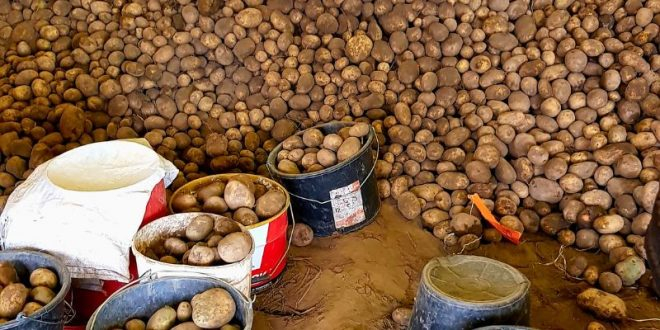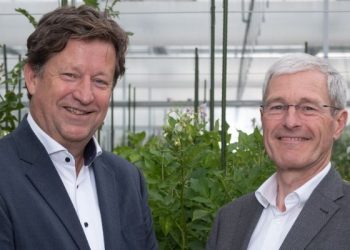#PotatoAgriculture #Post-HarvestStorage #AgriculturalInnovation #PotatoBreeding #Sustainability #CropQuality #ClimateResilience #AgriculturalResearch #FarmingChallenges #NutritionalValue
Description: Delve into the cutting-edge advancements in potato agriculture, exploring the latest research on post-harvest storage techniques and their impact on nutritional quality, marketability, and sustainability. Discover how scientists and experts are addressing challenges faced by farmers and the industry, ensuring a high-quality supply of this vital crop year-round.
Potatoes play a crucial role in U.S. agriculture, with an annual production of approximately 22.5 million tons. However, maintaining the post-harvest quality of potatoes presents significant challenges, including climate-related issues and disease susceptibility. In an interview with Munevver Dogramaci and Darrin Haagenson, research plant physiologists, it was highlighted that existing methods fall short in controlling physical deterioration during storage.
Dogramaci emphasized the importance of storing potatoes under specific conditions to preserve their peak nutritional quality. Unfortunately, unintended wounding of tubers during harvest and post-harvest operations leads to rapid quality loss, affecting texture, water retention, and increasing susceptibility to diseases during storage.
Addressing these challenges, Paul J. Collins, a research geneticist based in Maine, focuses on developing new potato varieties with enhanced agronomic qualities, disease resistance, climate resilience, and quality features. The success of varieties like Atlantic, extensively used for potato chips, underscores the positive impact of breeding programs on the entire value chain.
The USDA’s Agricultural Research Service (ARS) employs innovative technology to study the potato lifecycle, ensuring a year-round supply for various industries. With potatoes being a staple crop, accounting for 90% of total production during the fall season, the importance of effective post-harvest storage cannot be overstated.
The article explores the critical challenges faced by potato producers, including climate- and disease-related issues, resulting in post-harvest losses. Physiological dormancy of potato tubers after harvest is a key factor, influenced by genetics and environmental conditions. Early sprouting and slow wound healing pose significant threats to processing quality and nutritional value.
The ongoing research and innovations in potato agriculture, particularly in post-harvest storage, are essential for ensuring a sustainable and high-quality potato supply. The collaboration between scientists, geneticists, and agricultural experts is paving the way for improved varieties, enhanced disease resistance, and climate resilience, benefiting farmers, processors, retailers, and consumers alike.








